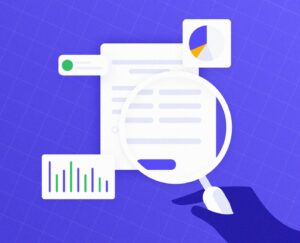How the Procurement Function Can Save Your Company Money
Over the years, the procurement industry has undergone a significant transformation. As a procurement professional with 25 years of experience, I have witnessed this evolution firsthand.
Gone are the days when procurement focused solely on meeting short-term, transactional needs. Corporations are now increasingly looking to their procurement teams to provide strategic insights that can help improve operational efficiency and create long-term business value.
Today, the role of procurement has become more complex and multifaceted, requiring finance teams to have a broader range of skills and expertise. With this shift, procurement has emerged as a critical function that can help organizations save costs in an ever-changing business landscape.
The Employee-Supplier Conduit
The procurement function plays a vital role as the bridge between internal departments and suppliers. By collaborating with employees responsible for making purchases, procurement professionals can establish strong relationships and better understand their needs and expectations.
In my career, I’ve seen internal employees who are in a hurry to achieve their goals and take it upon themselves to engage a supplier without involving the procurement team. However, I’ve found those suppliers sometimes cannot provide the employees with exactly what they need—and if a contract has already been signed, the company will ultimately have to live with that monetary commitment.
On the other hand, suppliers often encounter miscommunications and misunderstandings when working directly with internal employees. I’ve seen suppliers believe a deal was complete when, in reality, there was a much lengthier approval process ahead. Like any other business, suppliers have quotas to hit, and frustrations can occur if something has already been promised without the proper approvals.
Our goal as a procurement function is to work to eliminate these gaps and ensure that our suppliers understand our requirements and expectations. We also strive to prevent discrepancies between what our employees want and what the suppliers can provide. By engaging with internal employees at the beginning of the purchasing process, we can find the best deals and ensure that we make purchases that will provide the greatest ROI for our corporations.
Building a Purchasing Process
Establishing and leveraging a documented purchasing process is a crucial step toward saving costs and ensuring that these requests provide real value to the company. In order to achieve this, we need to follow a few key steps.
First, we need to understand if the employee’s request is valid. Do we need the tool or service? Is it within budget? Is the money being spent on this supplier going to be returned to the company somehow? It’s up to us to ensure that this partnership will provide value.
Second, we must confirm that what the supplier provides is something we don’t already have. In the past, I’ve worked with internal employees who wanted to purchase a new spreadsheet tool. The company already had contracts with Excel under Microsoft Office and Google Sheets—why would we need a third? Understanding what we have available and educating employees on their options is an important step.
Third, if the new supplier meets the employee’s requirements and can provide the necessary goods or services, we then work directly with them to get the best possible cost—leading to an order form or contract.
Finally, we review the supplier’s terms and ensure all the relevant internal stakeholders are included in the approval process. For example, if the purchase involves data privacy or touches our product in any way, we need to involve other internal teams like Legal, IT, and Security.
Every organization needs a well-defined purchasing process that caters to cost optimization, regulatory compliance, and value creation. However, for procurement to truly transform into a strategic entity, automating this highly manual workflow is imperative to optimize cost savings.
The Automation Advantage
In today’s fast-paced business environment, automation is key to ensuring that procurement processes are both efficient and effective. By adopting an automated solution to manage purchase requisitions and purchase orders, employees can be guided through the entire process, and procurement teams can gain visibility into what is being spent. This can help avoid duplicate purchases and ensure the right suppliers are being engaged.
With procurement automation, everything is documented—no matter how unique or complex. Different types of requests, like those for software or event sponsorship, can have their own specific approval flows based on financial and management approvals. By designating these various workflows in the solution, procurement teams can ensure that each request is handled in the most efficient and compliant way possible.
With automation, procurement teams can also look at spend history over months or years with specific suppliers. By looking at past purchase orders and supplier agreements, we can analyze purchasing data and get real-time data insights. We can see what contracts are coming up for renewal and work with our internal employees and the supplier to get the best deal possible. That’s what automation provides us—the analytics of what we’re spending our money on and what’s coming up in the future.
How AI Will Impact Procurement
Procurement automation has come a long way in the past 25 years, with significant technological advancements that now provide advanced analytics and predictive modeling that can help identify opportunities, mitigate risks, and drive strategic outcomes. As artificial intelligence (AI) continues to impact every aspect of business, we can expect even further advancements in the next decade—with AI at the forefront of these innovations.
To maximize the benefits of AI, we can expect several procurement technology features in the future. For instance, when an employee submits a purchase requisition, an AI-powered tool can automatically populate a list of suggested suppliers already contracted with the company that provides the requested goods or services.
Additionally, AI can be used to notify the procurement team automatically when a contract is coming up. By looking at a calendar, AI can consolidate data and inform us via Slack or other communication channels. This will help us stay on top of contract renewals and avoid missed deadlines.
Another area where AI can be incredibly useful is in the due diligence process. By checking whether a supplier has OFAC approval, we can ensure that they are not dealing with any terrorists or engaging in any criminal activity. This is an important part of the procurement process, and AI can help us streamline it and ensure that we are working with reputable suppliers.
A Final Thought
As the procurement function evolves with the advent of automation and AI, it is crucial to keep in mind the human side of the job. Building strong relationships with internal stakeholders and suppliers can go a long way in shaping the company’s spending habits.
My advice is to always negotiate for the best price and ask for discounts. It’s understandable that many people feel hesitant to do so, but it’s important to remember that the worst that can happen is that the supplier says no. It’s always worth asking the question. Additionally, don’t be afraid to ask for many pricing iterations to ensure you get the best deal possible.
Ultimately, the strategic value of the procurement team lies in our ability to proactively save the company money. By striking a balance between automation and human interaction, we can achieve this goal and help drive our corporations toward success.



